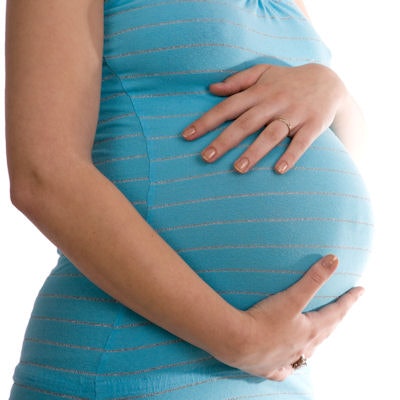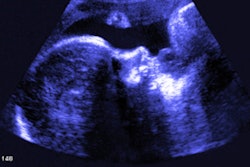
The use of medical imaging during pregnancy has grown in the U.S. and Canada over the past 20 years, with CT and MRI seeing the greatest increases, according to a study published online July 24 in JAMA Network Open.
 Dr. Rebecca Smith-Bindman.
Dr. Rebecca Smith-Bindman.The findings underscore the importance of tracking pregnant women's radiation exposure, given radiation's particular health risks to the mother and baby, senior author Dr. Rebecca Smith-Bindman told AuntMinnie.com.
"The fact that use of MRI is also increasing means we're moving in the right direction, but there's still room to improve," she said. "We're still doing a lot of CT in pregnant women, and we need to bring awareness to radiologists, gynecologists, and emergency department physicians that CT should be avoided whenever possible in pregnancy."
Particular risks
Imaging during pregnancy carries health risks for the fetus and can translate to congenital abnormalities, developmental delays, and even cancer, depending on time of exposure and radiation dose.
"Several reviews have quantified the potential harm of radiation exposure in pregnant women and concluded that exposure to radiation from medical imaging should be carefully considered while weighing risks and benefits to the patient," wrote the research team, which was co-led by Marilyn Kwan, PhD, of Kaiser Permanente Northern California in Oakland; and Diana Miglioretti, PhD, of the University of California, Davis. "Notably, a CT scan of the maternal abdomen and pelvis delivers a dose of 15 to 21 mGy to the fetus, similar to doses associated with increased leukemia risk in children."
The authors sought to characterize the variability and potential overuse of imaging in pregnant women and to quantify the radiation exposure that puts the fetus at risk. The study included 3.5 million pregnancies in 2.2 million women who gave birth to a live baby of at least 24 weeks gestation between January 1996 and December 2016 at one of six U.S. healthcare systems or in Ontario, Canada. Of these pregnancies, 26% were from the U.S. sites. The researchers tracked imaging rates per pregnancy categorized by country and year of child's birth; imaging modalities included CT, MRI, x-ray, angiography and fluoroscopy, and nuclear medicine.
The group found that, overall, 5.3% of pregnant women in the U.S. and 3.6% in Ontario underwent imaging that involved radiation over the study period. All imaging modalities were more common in women who had preterm babies than in those who did not.
| Growth in imaging use in pregnant women over two decades, 1996-2016 | ||
| Modality | 1996-2000 | 2011-2016 |
| CT | 0.25% | 0.59% |
| MRI | 0.11% | 0.74% |
| X-ray | 3.4% | 3.6% |
| Angiography and fluoroscopy | 0.39% | 0.31% |
| Nuclear medicine | 0.15% | 0.22% |
CT imaging rates in the U.S. grew from two examinations per 1,000 pregnancies in 1996 to 11.4 per 1,000 pregnancies in 2007, remained stable through 2010, and decreased to 9.3 per 1,000 pregnancies by 2016, for an overall average increase of 3.7-fold. CT rates in Ontario increased more gradually, from two per 1,000 pregnancies in 1996 to 6.2 per 1,000 pregnancies in 2016. X-ray, angiography and fluoroscopy, and nuclear medicine rates remained stable.
| Imaging rates per 1,000 pregnancies by modality, 1996-2016 | ||
| Modality/site | 1996 | 2016 |
| CT | ||
| U.S. sites | 2 | 9.3 |
| Ontario | 2 | 6.2 |
| MRI | ||
| U.S. sites | 1 | 11.9 |
| Ontario | 0.5 | 9.8 |
| X-ray | ||
| U.S. sites | 34.5 | 47.6 |
| Ontario | 36.2 | 44.7 |
| Angiography and fluoroscopy | ||
| U.S. sites | 2 | 2.4 |
| Ontario | 4.8 | 5.2 |
| Nuclear medicine | ||
| U.S. sites | 3.1 | 1.3 |
| Ontario | 2 | 3.3 |
Finally, the group found that more imaging was used -- particularly CT -- in several patient populations: black, Native American, and Hispanic women; those under 20 or over 40; and women with preterm babies.
"It is unclear why there are possible racial and age disparities in the receipt of medical imaging by pregnant women," the group wrote. "We hypothesize that minority women and younger women, compared with their counterparts, might be seen more often in emergency settings for abdominal pain where imaging is performed for clinical workup."
Why the increase?
The use of imaging in pregnant women may have increased over the study period for many reasons, including advances in imaging technology, patient or physician demand, defensive medical practices, and medical uncertainty, the authors noted.
"We observed much higher rates of radiography at one U.S. site in the late 1990s associated with a policy of evaluating positive tuberculosis skin test results with chest radiography," they wrote. "[And] pregnant women are at increased risk of pulmonary embolism. ... Both ventilation-perfusion scan and chest CT are used to diagnose [the condition], and both have relatively low radiation exposure to the fetus. However, maternal radiation exposure associated with chest CT, especially to the breast, is higher compared with that associated with ventilation-perfusion scan."
However, the fact that the use of MRI grew dramatically over the study timeframe in both countries is a good sign, according to the researchers.
"The use of MRI is growing and has surpassed CT use in both countries, likely because it improves assessment of fetal anomalies and does not expose the mother or fetus to ionizing radiation," they wrote.
In the end, deciding whether to use medical imaging that imparts radiation in pregnant women is a judgment call, Smith-Bindman said.
"Try to avoid exposing pregnant women to radiation -- but if it's necessary, do it," she said. "The use of medical imaging is always a balancing act between its benefits and harms."





















